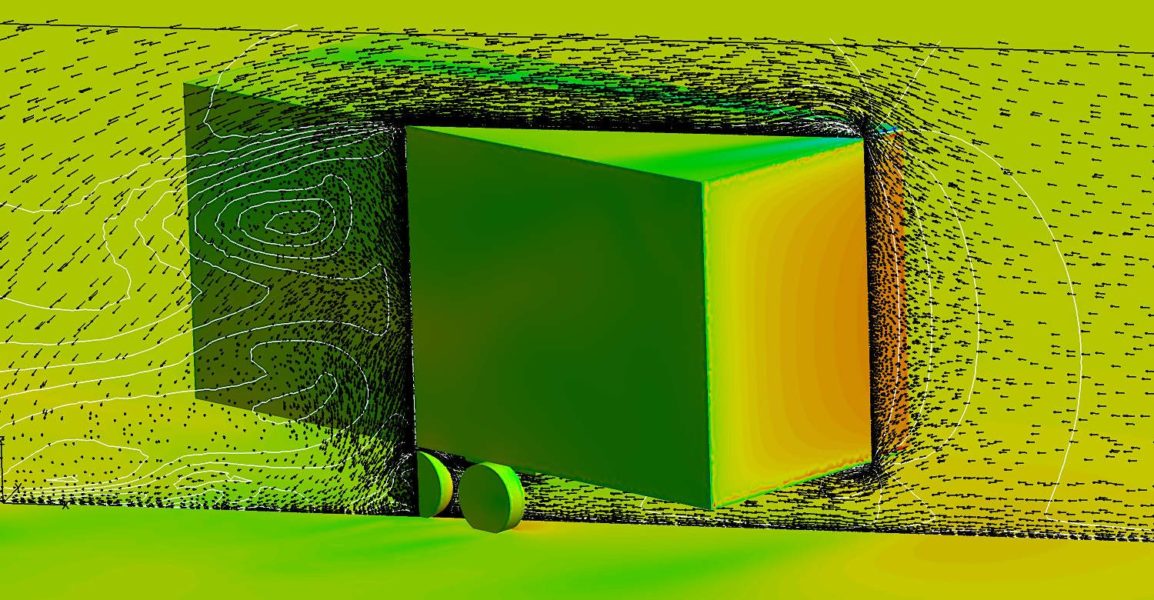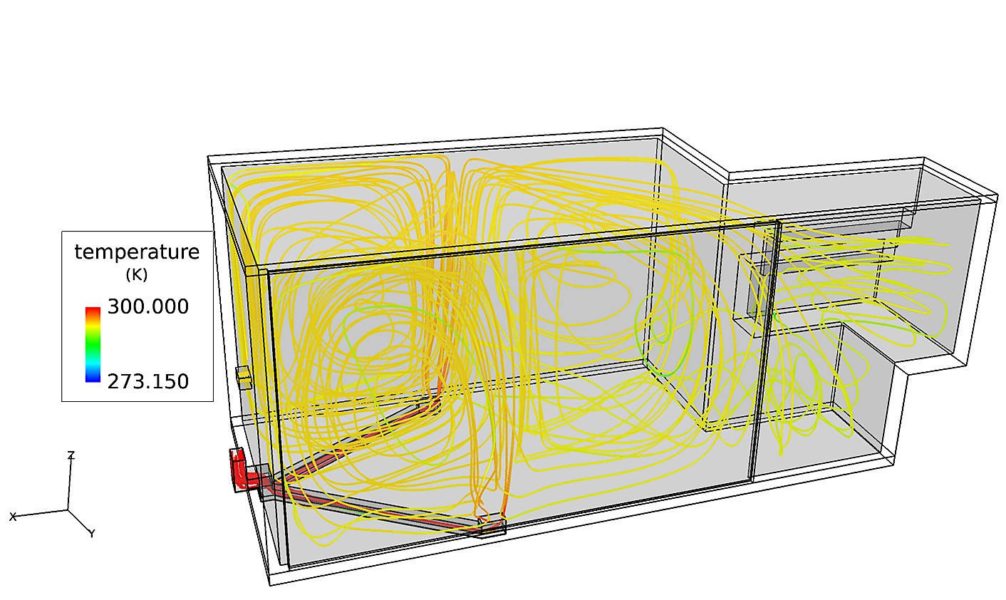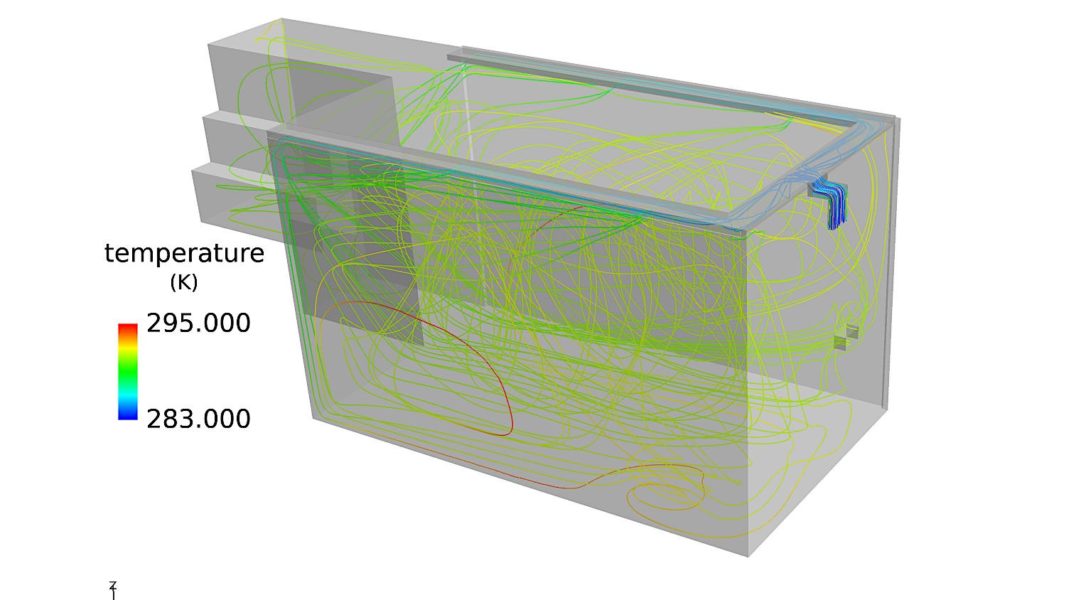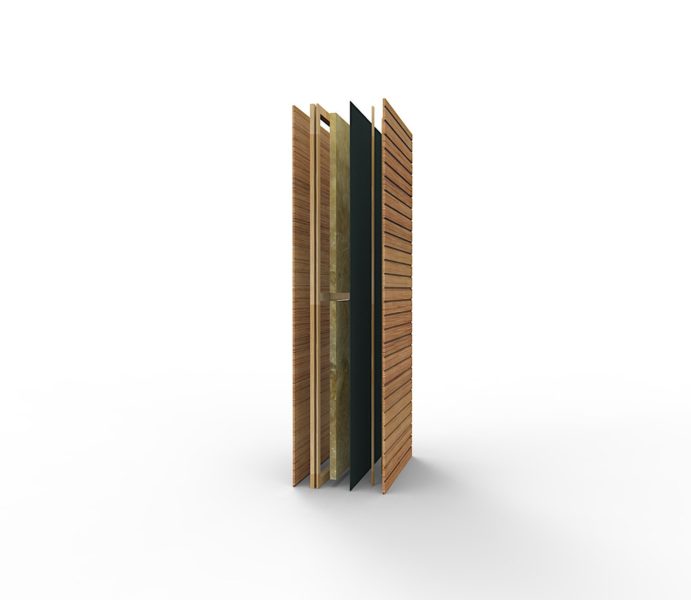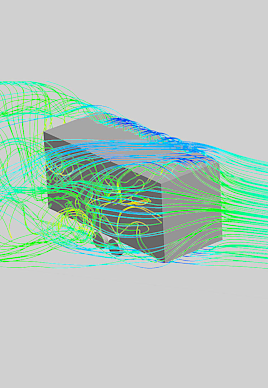External aerodynamics and thermal comfort analysis
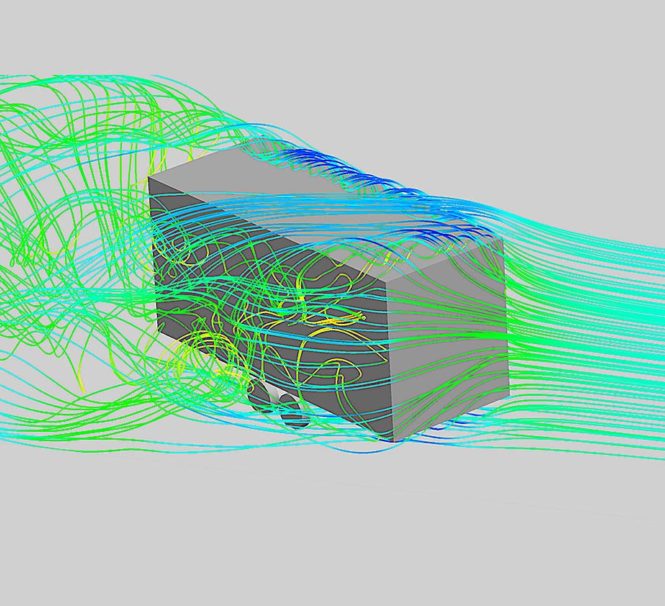


CFD studies on a container-like customizable workspace
Optiphore has created a fully operational office space within the dimensions of a 20-foot ISO container offering additional amenities like a WC and kitchenette. For the purposes of transportation, the container is designed to fit on a trailer. Therefore, an external aerodynamics analysis was done to ensure a safe transport under high wind conditions. Additionally, as part of the HVAC system integration, another Computational Fluid Dynamics (CFD) analysis was done to guarantee thermal comfort inside the workspace.
In recent years the renting or leasing cost of office space has sky-rocketed, becoming unaffordable to start a small or startup business, especially in large cities such as London City, Paris, Zurich, or Amsterdam. Additionally, the current Covid-19 pandemic has put extra emphasis on home office capabilities that many working people simply do not have.
One way to overcome this speedbump, without having to invest too much, is using traditional shipping containers as office space. The container can be transported easily and placed at any pre-owned space, providing the benefits of the office environment, while working at home. In many countries not even a building license is required.
The computational study of the container office is divided into two parts. The first part involves the design for energy self-sufficiency and heat comfort. To achieve those two goals, all the container walls consist of composite, “sandwich” structures calculated to increase heat insulation (approximate thermal conductivity 0.04W/(m⋅K)), and a glass panel was added for lighting during the day. The HVAC system was designed so that heating and cooling would be made possible with the use of a ducted air conditioning unit, with the ducts integrated inside the floor and the roof for heating and cooling, respectively.
To assess the efficiency of the heating system, the locations of greater heat loss had to be pinpointed. For this task, CFD simulations of the air flow within the container coupled with heat transfer through the container walls were performed. In the case of cooling, the exterior temperature is set to 35 degrees Celsius and the simulation runs until the equilibrium of inner temperature is reached at approximately 22 degrees Celsius. As for heating, with initial exterior temperature at 0 degrees Celsius the simulation runs until equilibrium restored at inner temperature of about 20 degrees Celsius.
Optiphore’s work focuses on performing CFD simulations of the coupled problem of heat transfer due to conduction within the container walls, and convective heat transfer due to air movement inside the container office. This type of problem may require many design iterations, as several design parameters can be considered, such as duct shape, wall material thickness, etc. With Optiphore’s computational tools a single simulation can be performed in a few hours, allowing the investigation of several designs in a single day.
Secondly, its external aerodynamic efficiency during transportation is put to the test. While the container would typically be partially sheltered from incoming wind by the towing vehicle, when exposed to crosswind this is not the case, increasing the danger of toppling. The performance of the container encountering crosswind when moving at high speed was investigated with the use of CFD. The trailer was considered to be, exposed to air at a 90deg angle, moving at approximately 25 m/sec or 9 beauforts resulting at a coincident air moving at 35m/sec at 45deg angle of attack.
Fluid flow around blunt objects is well established as a time-dependent problem, requiring several computational hours. Optiphore’s work focuses on subjecting the container office mounted on the trailer to moving wind at the aforementioned conditions. Simulation results verify that moving at 100km/h. (maximum legal speed in most EU countries for such a cargo) is feasible without significant toppling hazard.
All in all, via its Computational Fluid Dynamics (CFD) tools and expertise, Optiphore can add value to a products design whether addressing external aerodynamics problems or problems related to complex heat transfer phenomena.

